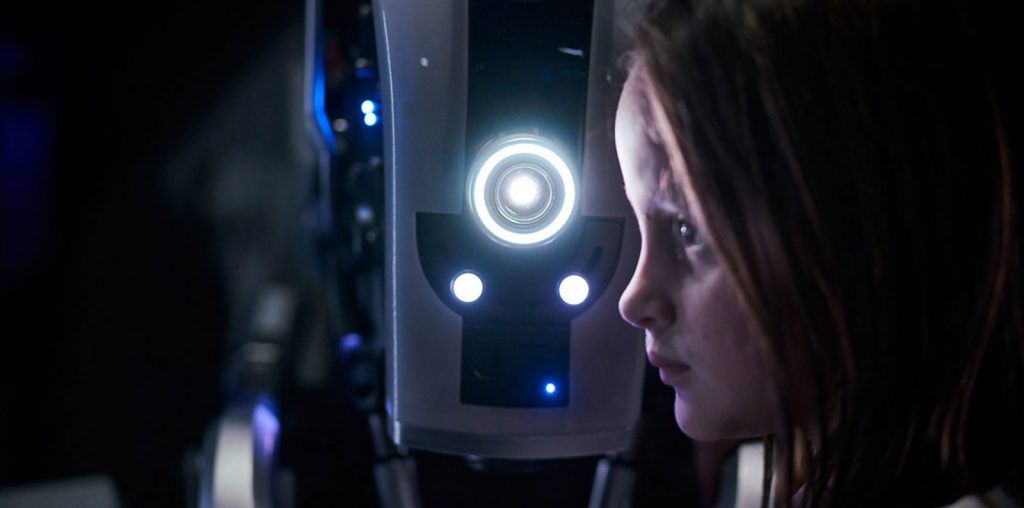
“Naqoyqatsi” is Godfrey Reggio’s excessively belated follow-up to his classic avant-garde feature “Koyaanisqatsi” (1982) and its less-than-classic sequel “Powaqqatsi” (1987). As with the previous films, “Naqoyqatsi” is a plotless and wordless cinematic essay using a kaleidoscope of natural and man-made wonders to depict a world at odds with itself. Sadly, “Naqoyqatsi” quickly degenerates into a monotonous skein of banal images which strangely reinforces the message that we’re living in a damn dull society.
Nearly 80 percent of the “Naqoyqatsi” footage is borrowed from existing sources ranging from stock film libraries to TV commercials to corporate videos. All of this footage has been digitally altered with the intention of creating visually striking imagery. However, this computerized desecration only serves to highlight Reggio’s bankrupt imagination: a handful of color effects are repeated endlessly, footage is slowed down and speeded up for no particular purpose, and bits of CGI tomfoolery litter the screen with reckless disregard. At times “Naqoyqatsi” resembles an overblown version of a home video shot by someone who figured out how to use the camera’s trick photographic effects but is clueless in using these effects for any practical purpose.
Reggio floods the “Naqoyqatsi” screen with such a hodgepodge of film that you have no idea what’s going on. Newsreel footage with Thomas Edison, Lenin and Marilyn Monroe crash into scenes of West Point cadets marching, hands banging a computer keyboard, NASA rockets heading to the moon, Third World mob running amok in bloody riots, a turkey in a Tex Avery cartoon dressed like Superman, stadium audiences doing a wave, smokestacks belching horrible black smoke, tropical fish swimming nonchalantly through coral reefs, women eating hamburgers, babies smiling, old men getting CAT scans, Osama Bin Laden sneering at the camera, atomic bombs exploding into mushroom clouds, gymnasts with excessively muscular physiques spinning through the air in slow-motion, Martin Luther King Jr. speaking at the Lincoln Memorial, Ronald Reagan narrowly missing being assassinated…if anyone reading this has any clue what all of this could possibly be about, please contact us at Film Threat.
If “Naqoyqatsi” has a saving grace, it is the film’s vigorous and frequently visceral score by Philip Glass. The music, which is simultaneously passionate and cerebral and is artfully spiced with extraordinary cello solos performed by Yo-Yo Ma, runs the entire length of the 80-minute feature and is frequently the sole reason for staying in the theater and paying attention to the screen. Miramax is releasing “Naqoyqatsi” and it would be nice if they could use their marketing might to buy an Academy Award nomination for Glass’ triumphant score. Indeed, “Naqoyqatsi” is the rare case where it is advisable to skip the film and buy the CD soundtrack instead.
In case you are wondering, the word “Naqoyqatsi” is from the Hopi Indian language and is roughly translated as either “a life of killing each other” or “war as a way of life.” That’s interesting, but the only thing being killed in “Naqoyqatsi” is the audience’s time and patience.
